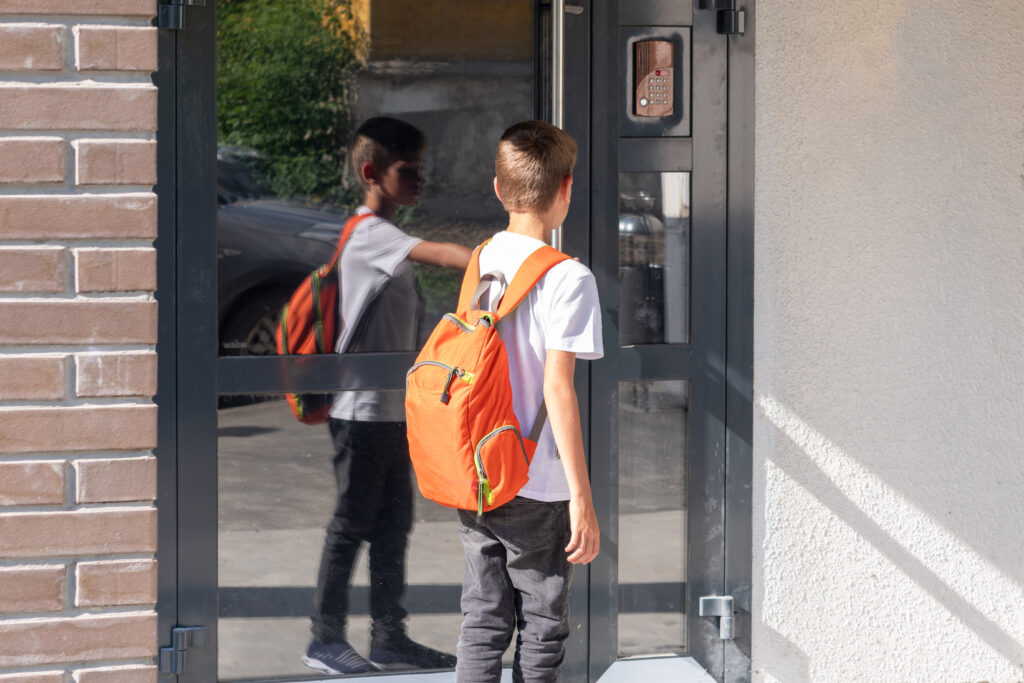In 2025, the world of school security is more dynamic than ever, with new guidelines, legislative initiatives and innovations shaping the landscape. For educators, administrators and policymakers, staying up to date with these changes is essential. As schools strive to create safe environments, understanding the many evolving aspects of security can help ensure that measures are both effective and tailored to the unique needs of each school community.
The Evolving Landscape of School Security Guidelines
The Partner Alliance for Safer Schools (PASS) School Safety and Security Guidelines cover recommended practices specifically for securing K-12 school facilities, including elementary schools, middle schools and high schools. “Developed by a collaboration of school safety, security and emergency management professionals, these guidelines aim to help schools implement effective security measures tailored to their specific needs and resources,” reads a description from the PASS website.

Updates in this version include combining the Property and Parking Lot layers and adding the Digital Infrastructure layer. More information on enhanced technologies is also included as schools begin to consider or implement solutions around AI, facial recognition and more. PASS just released the seventh version of their School Safety and Security Guidelines at ISC West 2025.
The ASIS International School Security Standard, a proposed American National Standard approved by American National Standards Institute (ANSI), is set to change how schools approach security. According to the ASIS International website, “As the first comprehensive standard of its kind, it will provide schools with a crucial measuring stick for assessing and improving their safety measures. This standard is expected to cover a wide range of issues, from basic security practices maximizing preventive measures, how schools can ensure that student needs as it relates to behavioral issues are being dealt with, prompting schools to critically evaluate their current safety posture and address potential vulnerabilities.”
The standards provide guidance on implementing physical security measures, such as perimeter controls, access management, surveillance systems and secure building designs to protect students and staff from potential external and internal threats. ASIS International plans to release their School Security Standard in the latter half of 2025.
One question that may arise is whether the ASIS International School Security Standards will conflict with the new version of PASS Guidelines, or to what degree. “Consider it this way,” said Guy Bliesner, School Safety and Security Analyst with the Idaho State Board of Education, “The ASIS standards are like plumbing code and the PASS guidelines are like a handbook for plumbers to implement those codes. The perception might be that they are competitive, when, in reality, they are complementary.”

Legislative Actions and Initiatives
Alyssa’s Law: From State to Federal?
Alyssa’s Law is legislation aimed at improving the response time of law enforcement during emergencies in schools by requiring the installation of silent panic alarms. The law is named in honor of Alyssa Alhadeff, a 14-year-old student who was killed in the 2018 mass shooting at Marjory Stoneman Douglas High School in Parkland, Florida. By mandating panic alarms, the law seeks to standardize a critical safety measure across schools, reducing variability in emergency preparedness.
Encouraging open dialogue among educators, administrators and policymakers will help everyone stay informed, adaptable and responsive to new challenges.
The legislative journey of Alyssa’s Law began at the state level and has been gaining momentum with efforts to establish it as a federal mandate. So far, Alyssa’s Law has been passed in several states, including Florida, New Jersey, New York, Texas and more, with numerous other states pending.
There is ongoing advocacy for broader adoption, including efforts to introduce Alyssa’s Law at the federal level. If enacted as federal law, Alyssa’s Law would establish a nationwide requirement for schools to implement panic alarm systems. This would standardize emergency response protocols across the country and potentially include federal funding to support the initiative.
Digital School Mapping
In addition to Alyssa’s Law, states are rolling out legislation surrounding digital school mapping. Digital mapping creates a digital map of the school’s campus and surrounding area, aiding in emergency response when these maps are shared with first responders. The availability of accurate, detailed maps can help in emergencies when time is of the essence and decisions must be made quickly. These maps include information on doors, windows, room numbers, hallways and pathways. As of 2024, there are at least 15 states that have passed legislation to make digital school mapping, as well as filing and regularly updating these maps as part of their security program.
Current Divisive Issues in School Security
The Debate Over Cell Phone Bans

As schools strive to create safe and effective learning environments, the debate over cell phone bans has become a prominent and divisive issue. In 2025, this topic continues to spark discussions among educators, parents and security experts about the role of technology in classrooms. Some districts are banning or severely limiting the use of cell phones in schools.
Those in favor of the ban, often educators and administrators, argue that cell phones can be a major distraction in classrooms, detracting from students’ focus and engagement. There are also concerns surrounding cyberbullying. Some advocates also believe that removing cell phones can prevent students from disseminating misinformation during emergencies. Opponents of banning cell phones, including parents, emphasize the importance of students having access to their phones for safety reasons. In emergencies, cell phones can be a tool for contacting parents or authorities.
The debate over banning cell phones in schools highlights the challenge of balancing technology use in education with maintaining safety and productivity. As schools continue to navigate this issue in 2025, it’s important to continue the open dialogue between teachers, administrators, parents and even students to consider all proposed solutions.
The Influence of Industry and Accountability

Manufacturers and solution providers play a significant role in shaping school security measures, offering a wide range of products and technologies designed to enhance safety. They often drive the adoption of specific security technologies, such as video surveillance cameras, electronic access control systems and emergency communication devices. However, they are not immune to criticism, as commercial interests can sometimes overshadow the primary goal of protecting students and staff. While these products can enhance security, there is a risk that schools may prioritize solutions over comprehensive safety strategies that include training and policy development.
Schools should engage educators, security experts and other stakeholders in the decision-making process. Additionally, schools should regularly review recommended practices and update their security measures to address emerging threats — before clicking “add to cart” on the latest security solutions.
As we look at the current trends in school security, it’s clear that change is constant. Schools face the challenge of integrating new standards, legislation and solutions while keeping student and staff safety at the forefront. By focusing on collaboration and accountability, schools can continue to navigate these changes more effectively. Encouraging open dialogue among educators, administrators and policymakers will help everyone stay informed, adaptable and responsive to new challenges. By keeping the conversation going, we can work together to create safer schools for everyone.
EDITOR’S NOTE: Want to read more on related topics? Visit EDspaces’ sister publication CampusSafetyMagazine.com for the latest news and research on school safety and college campus security.

